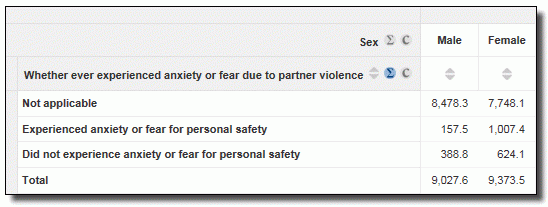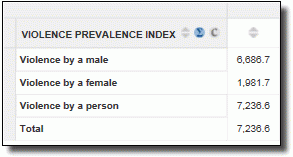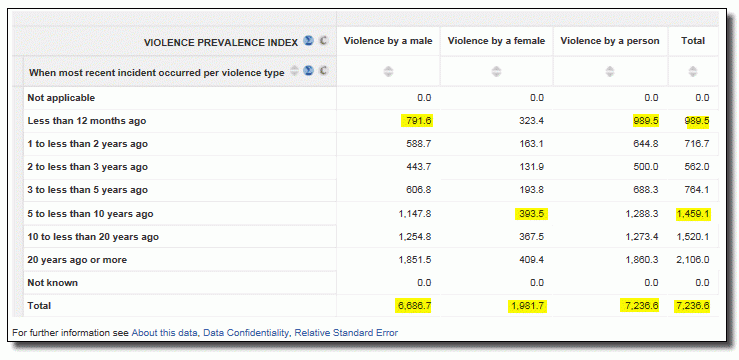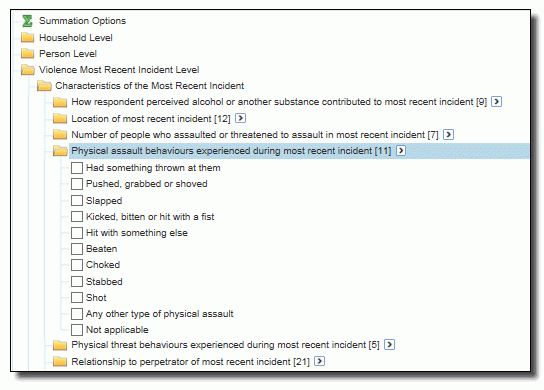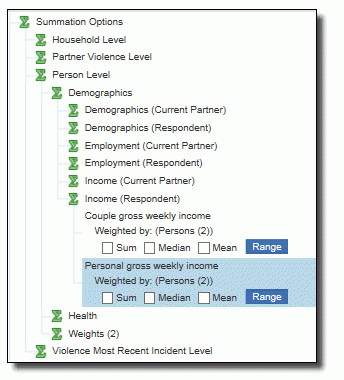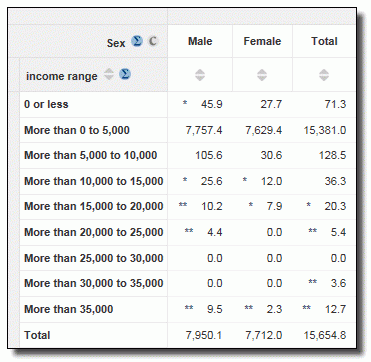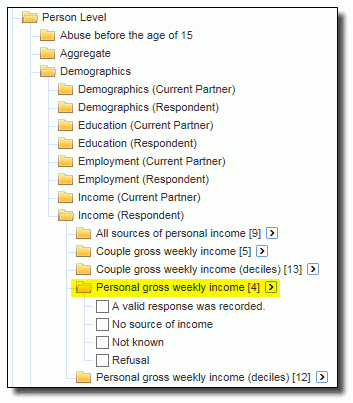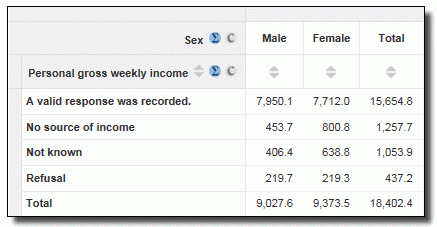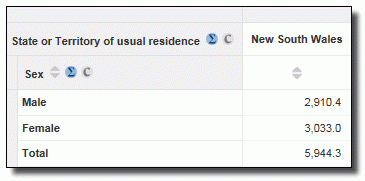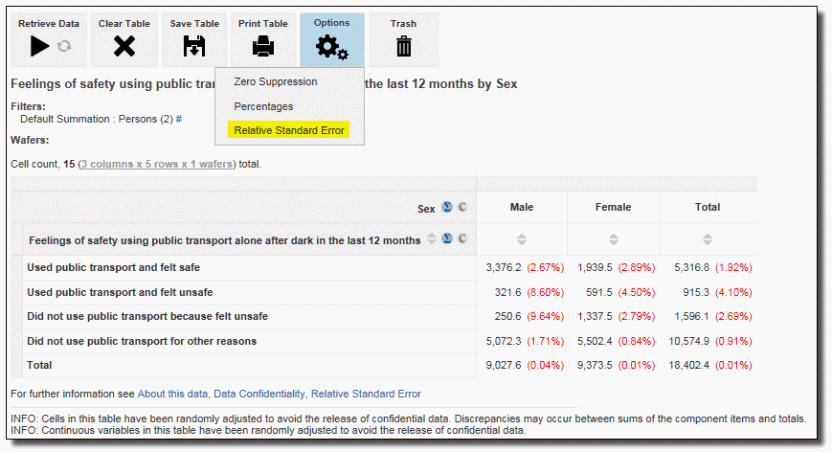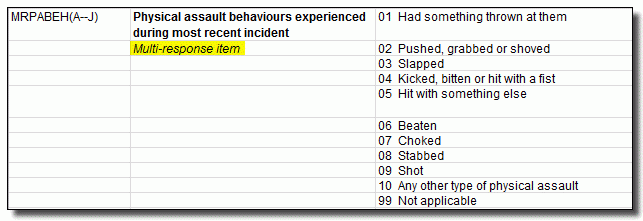Household level
The Household level contains compositional and geographic information about the person’s household and household income at the time of the survey.
This level contains one record for the household of each selected person and has a weight attached (the same weight as applied on the Person level). As such, it can be used as per the Person level (see below).
Additional notes:
- Estimates should not be produced for males or all persons for Tasmania, the Northern Territory, and the Australian Capital Territory, as the weights have not been benchmarked to these states/territories. For further information on sample design and weighting, refer to the Methodology and the Data Quality and Technical Notes sections in the Personal Safety Survey, Australia: User Guide, 2016 (cat. no. 4906.0.55.003).
- Household weights have not been produced for the PSS. As such, Person weights have been applied to all household data items, and all estimates produced using Household level variables represent the person population and not the household population.
- Caution should be used when making inferences regarding household characteristics and experiences of violence, as household characteristics at the time of survey may not be the same as they were at the time of a given experience. For example, a person may reside in a different state at the time of survey to the one they experienced violence in, or the composition of the household may have changed since experiencing violence. Therefore, it is recommended that household characteristic data items only be used in conjunction with data items about experiences restricted to the last 12 months.
For more information on the data available on this level, including interpretation points, refer to the Household and Demographic Characteristics chapter of the Personal Safety Survey, Australia: User Guide, 2016 (cat. no. 4906.0.55.003) as well as the Data Item List available in the Data downloads section of this product.
Person level
The Person level is used to produce socio-demographic data. Each person is represented by a single record, with a single value for each data item. Each record has a weight attached, signifying the number of population units that the respondent represents, and needs to be used in order to produce estimates for the entire in-scope population. This weight is applied automatically by TableBuilder, but needs to be manually applied when using the Detailed Microdata (more details regarding applying weights can be found in the Using Weights and Producing RSEs and MoEs in Detailed Microdata collapsible of this product).
In addition to containing socio-demographic information about the respondent, the Person level also contains information about a person’s current partner who they are living with at the time of survey (if applicable). For a full list of the data items available refer to the Data Item List which can be accessed from the Data downloads section.
The Person level also contains broad level prevalence data for all experiences collected in the survey, which can be found in the aggregate data items. These aggregate data items can be used to produce prevalence rates for various experiences. For further information, refer to the Using Aggregate Data Items section of this product.
This level also contains detailed information about the:
- most recent episode of stalking by a man and by a woman
- the first incident of physical and sexual abuse experienced.
Person level data items can be used in conjunction with data items on the other levels. For example, when looking at experiences of emotional abuse by a partner, data on the Emotional abuse by a partner level (such as the type of emotional abuse behaviours experienced) can be cross tabulated with data on the Person level (such as the sex of the respondent). This is done by simply cross tabulating the data items in TableBuilder, or by merging the Person level file with the Emotional abuse by a partner level file in the Detailed Microdata (for details on merging, refer to the Identifiers and Copying Data Across Levels in Detailed Microdata section of this product).
Additional notes:
- The aggregate data items on the Person level should not be used in conjunction with data from the lower level from which they are derived (e.g. using ‘Whether experienced violence’ data on the Person level with data from the Violence prevalence level). For more information, refer to the Using Aggregate Data Items section of this product.
- Caution should be used when making inferences about the relationship between current socio-demographic characteristics at the time of survey and any experiences that occurred in the past. It would be misleading to assume that a person's current socio-demographic characteristics were present at the time of the experience. Their current characteristics such as disability or employment status may not reflect their characteristics at the time of the violence. Accordingly, comparisons should be limited to experiences that occurred more recently, e.g. in the last 12 months.
- Some socio-demographic data items will not change over a person’s lifetime (for example country of birth and first language spoken as a child) and can be analysed in conjunction with experiences which occurred at any time in the past.
For more information on the data available on this level, including interpretation points, refer to the relevant Survey Content chapters in the Personal Safety Survey, Australia: User Guide, 2016 (cat. no. 4906.0.55.003) as well as the Data Item List available in the Data downloads section of this product.







